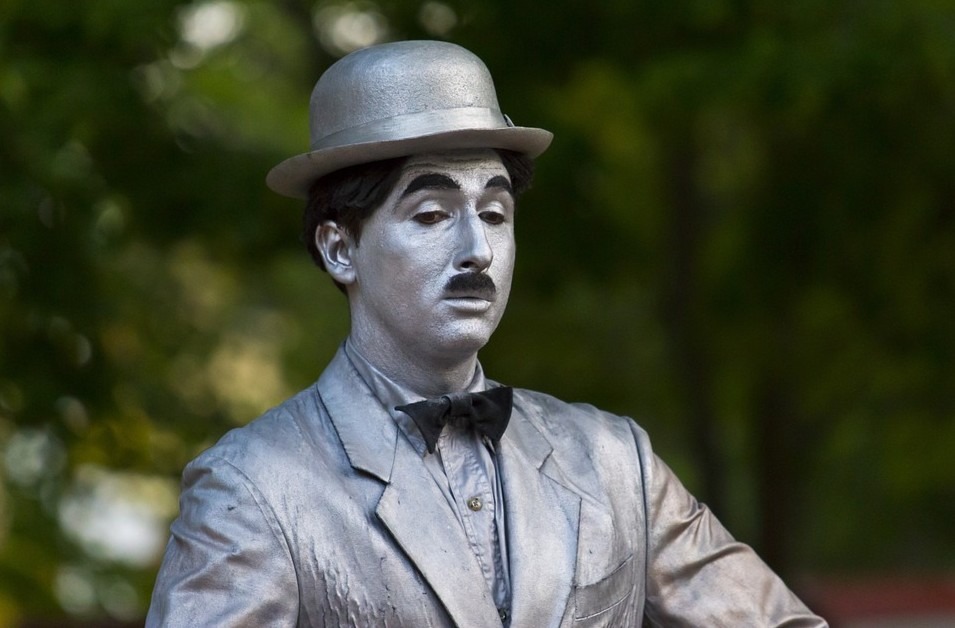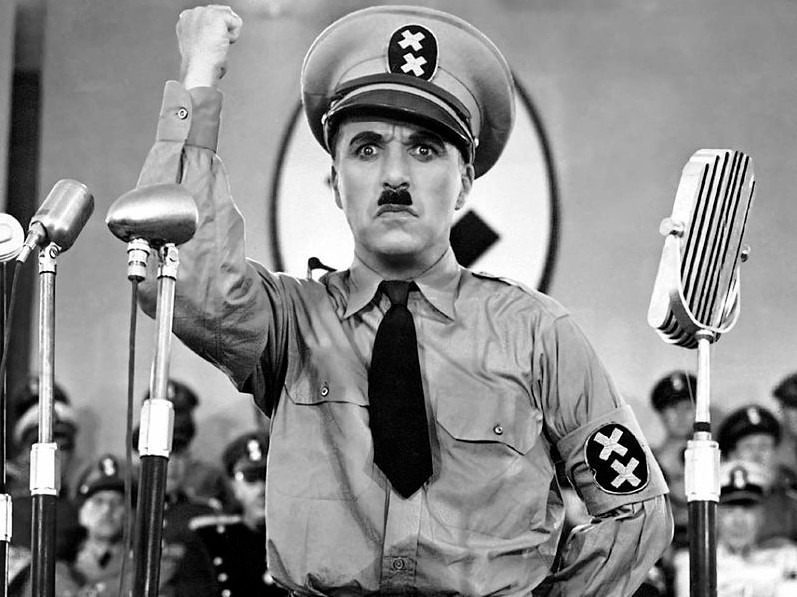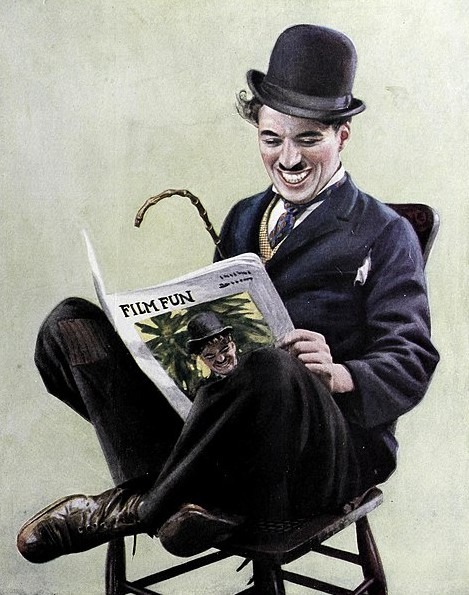Almost every one of us is familiar with the name Charlie Chaplin, and he’s known to be a great director, actor, and writer. But did you know that before he became successful, he went through a lot ever since he was a child? Charlie Chaplin was an English comic actor, composer, and filmmaker who became popular in the silent film era. Through his screen persona, The Tramp, he became a worldwide icon and considered among the most important figures in the history of the film industry.
Charlie Chaplin’s career spanned over 75 years, from his childhood during the Victorian era until a year before he died in 1977. And along with his success were both worship and controversy. If you’d like to learn more about him, read on as we’re giving you the ultimate guide to Charlie Chaplin. Meanwhile, open the link to know the 5 best casino films ever made.
Charlie Chaplin’s Personal Life
Charlie Chaplin was born Charles Spencer Chaplin on April 16, 1889. Though there was no official record of his birth, he believed that he was born at East Street, Walworth in South London. At the time of his birth, both of his parents were music hall entertainers. Hannah Chaplin, his mother, had a short and unsuccessful career under the stage name Lily Harley. Charles Sr., Charlie’s father, on the other hand, was a popular singer. Even though Charlie’s parents never divorced, they separated around 1891.
Charlie’s childhood was filled with hardship and poverty. This made his eventual trajectory the most dramatic of all the rags to riches stories ever told. His early years were spend in the London district of Kennington. His mom did not have any means of income other than infrequent nursing and dressmaking. His dad did not provide any financial support to them.
With this, Charlie was sent to Lambeth Workhouse when he was seven years of age. He was housed by the council at the Central London District School for paupers. After 18 months, he was shortly reunited with his mother before she was forced to readmit her family to the workhouse in July 1898. In September 1898, his mother was committed to Cane Hill mental asylum as she had developed psychosis due to syphilis and malnutrition.
Charlie and his brother were sent to live with their father, who, by then, was a severe alcoholic. Their experience was bad enough that they provoked a visit from the National Society for the Prevention of Cruelty to Children. After two years, their father died from liver disease.
While Charlie was dealing with poor schools and his mother surrendering to mental illness, he started performing on stage. From there, he continued performing until he entered stage comedy and vaudeville, and later on films. You can read more about his childhood in our article, The Childhood of Charlie Chaplin.
When Charlie was about twelve, he got the chance to act in a legitimate stage show. He appeared as Billy the page boy, in support of first H.A. Saintsbury and then William Gillette in different productions of Sherlock Holmes. When he began a career as a comedian in vaudeville, this took him to the United States in 1910.
When he arrived in the US, he scored an instant hit with American audiences. After that, he agreed to appear before the cameras in November 1913. His entrance into the film industry took place when he joined Mack Sennett and the Keystone Film Company. From then on, he grew more popular.
If you’d like to learn more about Charlie Chaplin’s personal life, you can read our article, Who Was Charlie Chaplin?
Charlie Chaplin’s Career
Soon after Charlie Chaplin entered the film industry, he developed the Tramp persona, which created a large fan base. In addition to acting, he also directed his own films and continued to hone his craft when he moved to the Essanay, Mutual, and First National corporations. When the year 1918 came, he was among the best-known figures in the world.
In 1919, Charlie Chaplin co-founded the distribution company United Artists. This company gave him complete control over his films. In the 1930s, he initially refused to move to sound films and continued to produce films without dialogue. He also became increasingly political after that. The very first sound film that he made was The Great Dictator, which satirized Adolf Hitler.
For Charlie Chaplin, the 1940s was a decade marked with controversy, which made his popularity decline fast. He was accused of communist sympathies. There were also members of the press and public who found his involvement in a paternity suit as well as marriages to much younger women disgraceful. With these issues, an FBI investigation was opened. Chaplin was forced to leave the United States and live in Switzerland. And in his later films, he abandoned the Tramp. If you’d like to know more about the controversies in Charlie Chaplin’s life, you can read our article, The Controversies of Charlie Chaplin. You can also read The Spouses of Charlie Chaplin for more information about his relationships.
Charlie Chaplin wrote, produced, directed, starred in, edited, and composed the music for most of his films. He was known to be a perfectionist. He was also financially independent, which allowed him to spend years on the making of a picture. Most of his works were characterized by slapstick mixed with pathos, symbolized in the Tramp’s struggles against hardship. The majority of his films contained social and political themes, and as well as autobiographical elements.
With his works, Charlie Chaplin received an Honorary Academy Award for the incalculable effect he has had in making films the art form of the century in 1972. Even today, Charlie Chaplin is still highly regarded, and some of his works are often ranked on the list of the greatest films of all time.
If you’d like to learn more about his career and his works, here are some helpful links that you might want to check out. Also, here are the three action and adventure films you don’t want to miss.
The Top 10 Most Popular Films of Charlie Chaplin
Here’s a list of the 10 best Charlie Chaplin movies of all time:
- Modern Times
Modern Times was a film released in 1936. It was the last appearance of Charlie Chaplin as the Tramp. It was a reference to industrial development, which he believed to be the cause of the situations of the Great Depression. He played the role of a factory worker in this film who got fired after having a nervous breakdown. After that, the Tramp goes to jail. When he was released, he encounters several desperate people. His schemes to return to jail are always disenchanted by other people
- City Lights
City Lights was a 1931 film that had synchronized music and sound effects together with dialogue intertitles. This film follows the Tramp as he falls in love with a blind girl. The Tramp took on different jobs and gets into a boxing match as he tries to return to the girl.
- The Great Dictator
The Great Dictator is a 1940 film by Charlie Chaplin. It was not the first anti-Nazi Hollywood production, but it was among the most unforgettable. The film starred Chapline as both the fascist dictator of fictional Tomania and a Jewish barber who’s mistaken for the dictator and put into power. What made this film famous is the final speech wherein Chaplin’s barber makes an emotional plea to the world for peace. In addition to that, it was also his first true sound film. It has been nominated for five Oscars.
- The Kid
The Kid is a 1921 film, and it was Charlie Chaplin’s full-length directorial debut. It starred Chaplin as the Tramp along with the young Jackie Coogan as the child, who later on played the role of Uncle Fester on The Addams Family. The Tramp discovers the child as a baby. As years passed, the child’s mother becomes a popular actress and starts to look for the boy that she abandoned years ago. However, the Tramp tries to keep the boy. In the end, both of them were welcomed by the child’s mother.
- The Gold Rush
According to Charlie Chaplin, The Gold Rush, which is a 1925 classic film, was the one he wanted to be remembered for. The film blends tragedy and comedy in a brilliant way. The story is about the adventures of the Tramp as a gold prospector in the Yukon during the Klondike Gold Rush. He gets stuck in a cabin with two other prospectors and makes friends with one of them.
- The Circus
The Circus is a 1928 film that is considered one of the best comedies by Charlie Chaplin. However, it was also his most worrisome production at the same time. It’s because, during the production of this film, he went through several personal tragedies, such as the death of his mother, his divorce from his second wife, and an IRS investigation. But even though he went through all of that, The Circus still became one of the highest-grossing silent films of all time.
- Limelight
Limelight is a 1952 film. It was a semi-autobiographical tale about a performer in the World War I era in London. It was the last film that Charlie Chaplin made in the United States as he was barred from the country while endorsing the film. This film had earned him the Best Original Score Award. He also received a 12-minute standing ovation during the awarding ceremony.
- Monsieur Verdoux
Monsieur Verdoux was a 1947 film by Charlie Chaplin. During the release of this film, Chaplin was no longer the star he once was. It was because, during this time, many controversies being circulated, and several groups boycotted the film. This was his very first film that did not include a Tramp-like character. Even though it flopped in the United States, it was a huge hit abroad.
- The Pilgrim
The Pilgrim is a 1923 film that marked an end to some of the chapters in Charlie Chaplin’s life and career. It’s the last film that he made for the First National Film Company. It stars Chaplin as a fugitive convict who pretends to be a missionary to dodge custody.
- A King in New York
A King in New York is a 1957 film and also the final starring role of Charlie Chaplin. It is one of his best films. He wrote, directed, and scored this film, as well. It’s a satire that focused on the Red Scare that enthralled the United States in the 1950s. He portrayed the role of an overthrown monarch who came to the United States without any money. But after doing some TV commercials, he becomes famous.
If you are interested to learn more about the works of Charlie Chaplin, here are some helpful links that you can check out:
Conclusion
Charlie Chaplin was indeed one of the best and most popular actors of the early 20th century. It’s amazing to know that his career lasted for decades, from the silent-film era of the 1910s to the New Hollywood of the 1960s. His works were able to stand the test of time, as they were endearing, funny, and certainly fun to watch. And even though he went through a lot and was involved in many controversies, nothing can change the fact that he’s among the greatest personalities in the film industry. We hope this helped you learn more about the life, career, and works of Charlie Chaplin. And if you want to learn more about the Cannes film festival, visit the given link.



